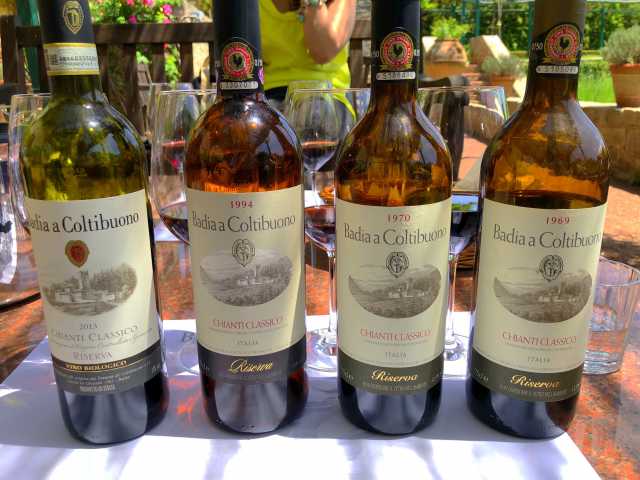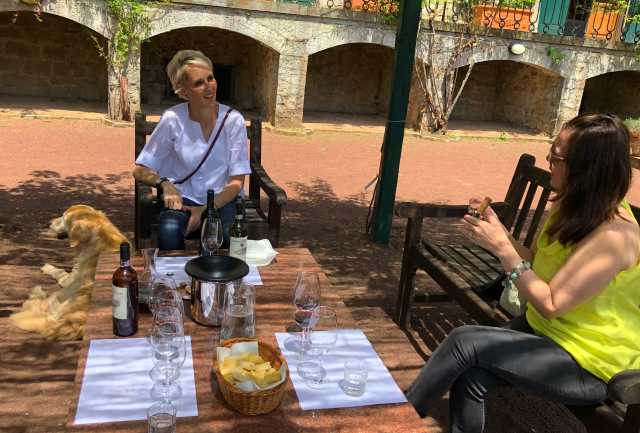Sunday the 3rd June, my wife and I at a “historical vintages” private tour and “tasting” at Badia a Coltibuono in Gaiole, Chianti (the quotation marks on “tasting” because one pays for and takes home the bottles).
The ‘94’s cork stuck badly to the sides, so had to be pushed in and strained into a decanter. The ‘70’s & ‘69’s corks were understandably a bit damp a fourth down, and split a little; but, with care, came out cleanly.
The house’s general style seems svelte and elegant rather than muscular and forward. The ‘94 put on weight after some minutes and showed the most concentration, heft, and body; and seemed still in the process of coming fully together. Decent length.
The ‘70 was medium bodied at most, presented one a serene personality and soft, velvety fruit/texture. Notably poised. Length was medium.
The ‘69 was the leanest of the three, showing a bit of green in the fruit, and drying tannins in the finish. Drinkable, not unpleasant; but not very interesting other than its age.
After the “tasting” and a nice chat with our guide, we took the remainder of the bottles to the on site restaurant and had them with lunch. The ‘94 was good with the meal; the ‘70 for a nice, more contemplative drink before our coffee (we skipped dessert). The ‘69 we pretty much ignored.

